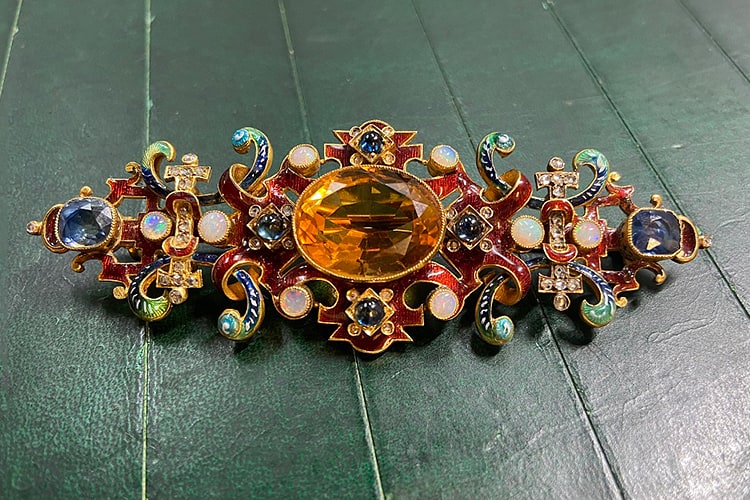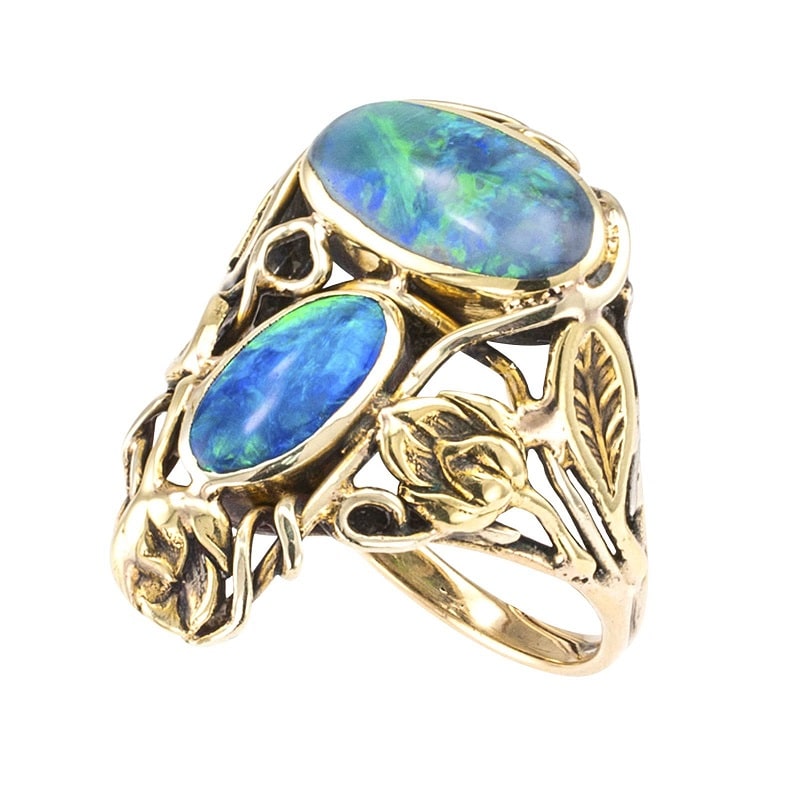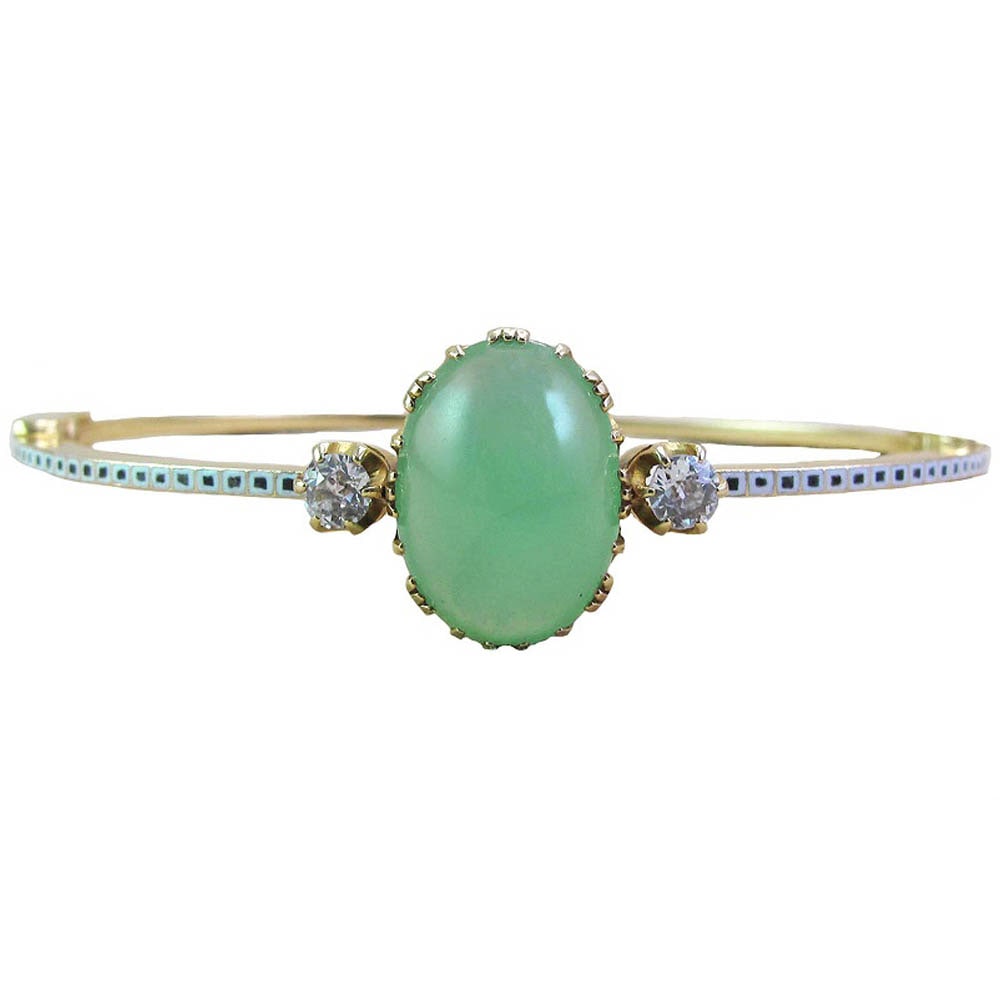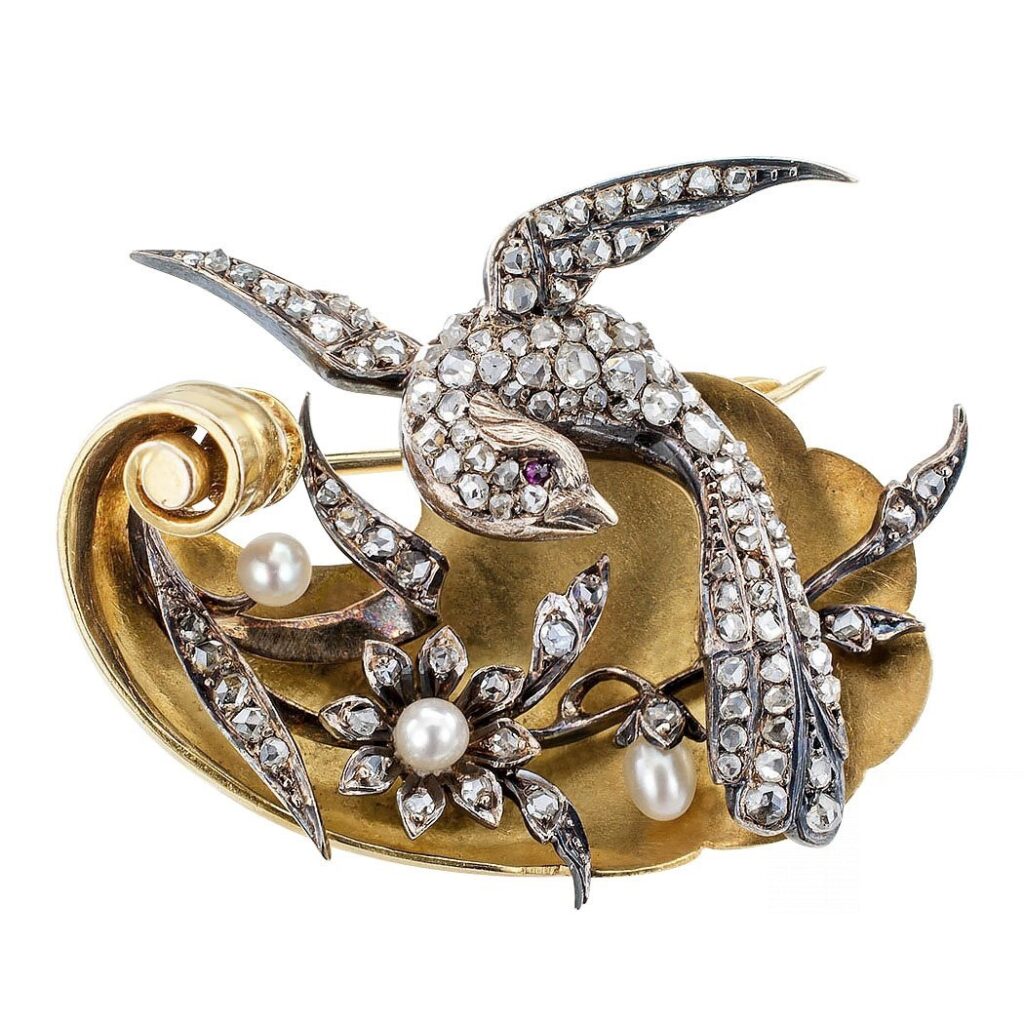Victorian Jewelry 1885-1901

Electricity, Arts & Crafts Movement, Art Nouveau, Suffragette Movement, Gibson Girls, Art Workers Guild, Arts & Crafts Exhibition Society, Sarah Bernhardt all defined the Aesthetic Years.
When: 1837-1901. Victoria ascended the throne on June 20, 1837 and was, at the time, the United Kingdom’s (UK) longest reigning monarch when she died on January 21, 1901. Queen Victoria ruled for 63 years and 7 months. Her reign was known as the Victorian era (Victoriana) and was subdivided into three periods, Romantic, Grand and Aesthetic, with each period triggered by major events. The Aesthetic Years, which will be covered in this blog, also known as the Late Years, runs from 1885 to 1901, when Queen Victoria passes away. While the Victorian era was specifically British, Queen Victoria’s status and the reach of the British empire caused Victoriana to be a global influence. It is important to note that there were changes in jewelry styles during the 63 years that Victoria was on the throne. However, there were also certain motifs and themes that stayed throughout her reign. Styles did not drastically change as the years went by, instead they evolved over time. What that means is that you will see certain motifs or themes that will carry over from the different periods during Victoriana. This is often known as transitional jewelry.
Famous Makers: Mellerio, Boucheron, Köchert, Fontenay, Garrard, Giuliano, Castellani, Wiese, Froment-Meurice, Fontana, Robert Phillips, Fabergé, Masriera, Verver, Froment-Meurice, Boivin, Tiffany & Co.
Motifs: Sports themes, hearts, bows, birds, animal heads, horseshoes, crescent moons, stars, quatrefoils, trefoils, wishbones, owls, knots, crowns
The Look: Jewelry became smaller during this time, there was a wide diversity of styles, lighter color gemstones and pastel enamels.
Materials: Silver, Oxidized Silver, Gold, Rolled Gold, Platinum, Aquamarine, Amethyst, Diamond, Ruby, Emerald, Sapphire, Turquoise, Opal, Moonstone, Pearl, Peridot, Quartz, Chrysoberyl, Chrysoprase, Horn
By the late 19th century Britain was the most powerful country in the world, controlling about one quarter of the world in both land and people, according to Victorian-era.org. Due to the continuing Industrial Revolution, Britain was prosperous and changing socially at a rapid rate.

Arts & Crafts opal and 14-karat gold ring, American, courtesy Jacob’s Diamond & Estate Jewelry.
The Aesthetic years were focused on art and were a bit of a rebellion against industrialization and machination. These years were a convergence of multiple styles in jewelry, there was something for everyone. The revival styles of the earlier years began to fade as jewelry designers came out with new ideas. One school of thought was that jewelry should be intrinsically beautiful and that the value of the stones and materials were of less importance than the artistry of the finished jewel. Two organizations were formed that paved the way for these new styles — the Art Workers Guild and the Arts & Crafts Exhibition Society. This new way of thinking about jewelry spawned two big artistic movements – Art Nouveau and Arts & Crafts. And in a backlash against industrialization and machination, there was a move towards handmade jewelry. During the 1890s, technology to melt platinum became available. It was now possible to use this precious metal in jewelry, launching a whole new look of light, lacy diamond or diamond and pearl pieces that set the stage for a new style of jewelry that was elegantly refined.
One of the biggest inventions during the Aesthetic Years was electricity. Electric lights gave off a very different type of light than candles and suddenly all of the rich, heavy fabrics in deep colors used in clothes and furniture looked dull and dreary. Lighter colors and fabrics that looked prettier under electric lights became the fashion. Electricity was also very good news for diamonds, which sparkled magnificently under electric lights, making them a popular choice for evening wear. Diamond riveiere necklaces (a line of diamonds, sometimes called a tennis necklace today), diamond fringe necklaces, diamond bracelets and diamond tiaras were all favorites for night time. Diamond tiaras were sometimes made to do double duty as a necklace, or to even come apart to be worn as brooches. It was also very stylish to wear diamond brooches or pins as hair decorations. In 1886, Tiffany & Co., introduced the diamond solitaire ring, a style that remains popular.
Lifestyles during this time were changing, especially for women, who formed the Primrose League followed by the Women’s Liberal Federation in 1885 and 1886 respectively, to campaign for the right to vote. Women were going to college and playing sports such as tennis and golf or bicycling. The Gibson Girl, illustrations of women by the American artist Dan Gibson, captured the essence of the “ideal” modern woman who was confident, independent and active, but not championing change in the same way as the women in the suffragette movement.

Hinged bangle showcases chrysoprase, old European cut diamonds, black and white enamel, 18-karat gold, by Giuliano, courtesy Faerber Collection.
These more active lifestyles changed jewelry. Lighter, smaller pieces became fashionable. Jewelry with sporting themes was popular. The large brooches of the early and middle Victorian years were replaced by smaller pins, worn several at a time, that were scattered across the bodice of a dress, earning them the title of “scatter pins”. Stars and crescent moons were especially popular along with all kinds of bugs. Earrings started out small in this period, but morphed into long drops dripping in diamonds in the 1890s. Bangles adorned wrists and were often worn in multiples. Pendants and lockets stayed stylish, but were scaled down in size from earlier years.
When Queen Victoria went into mourning, her eldest son Edward, who was next in line to the throne, took over many of her official duties. When he was 21, Edward married Alexandra of Denmark. Princess Alexandra frequently wore dog-collar style chokers to hide a scar on her neck. It became a fashionable choice. As the next Queen of England, Alexandra set the fashion choices for many other women of style. Since Edward and Alexandra were stepping in for Queen Victoria, who was still mourning Albert all these years later, the couple was influential in setting fashion and jewelry trends.

Rose cut diamonds, pearls, ruby silver and 18-karat gold bird brooch, late 1800s, courtesy Jacob’s Diamond & Estate Jewelry.
A favorite past time of Victorians that lasted through the Aesthetic Years was gardening. It was another backlash against industrialization — nature versus machine. Victorians planted elaborate gardens and wealthier people even collected exotic plants. Because of this fascination with gardening the Victorian era was known for its jewelry inspired by creatures who lived in the flora and fauna. Birds, dragonflies, butterflies, bees and flies rendered in precious metals and gems were popular themes in jewelry.
With more leisure time and money to go out, theater was a popular activity for Victorians. Sarah Bernhardt was the most famous actress of the time and what she wore influenced others. When she portrayed Cleopatra in the play of the same name, she wore turquoise and silver Egyptian style jewelry, which started another rush to Egyptian Revival jewelry. She also favored Art Nouveau, but the style appealed more to artists and the avant garde of the time, the more conventional Victorians thought it was improper. While Art Nouveau was very influential artistically, it was never a mass produced or mainstream style.
Queen Victoria died in 1901 and her son Edward, took over the throne ushering in the Edwardian era, a time of formality and elegance.
Source: International Antique Jewelers Association. Top image: Austro-Hungarian, citrine, sapphire, opal, diamonds, gold and enamel, late 1800s, courtesy Odeon.